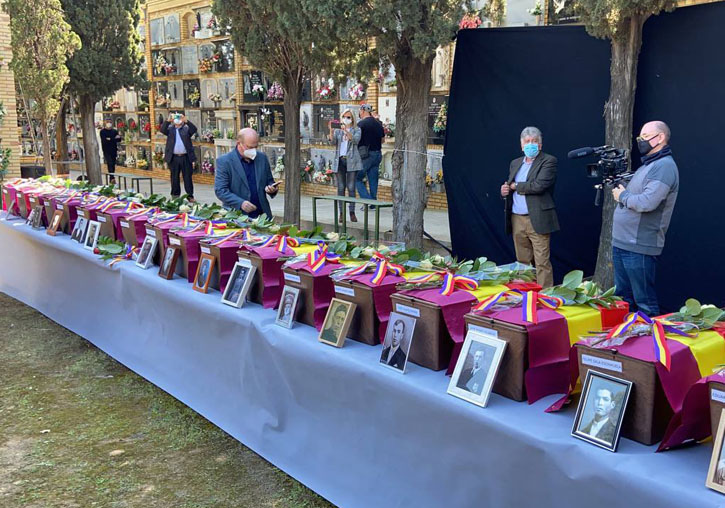
The University of Valencia (UV) and the Fisabio Foundation have identified eight victims of the Civil War and the Franco regime in mass grave 112 of the Paterna cemetery, in a work carried out within the framework of the agreement of the Valencian Government through the Regional Ministry of Participation, Transparency, Cooperation and Democratic Quality. In action, the UV has focused on the historical and bioanthropological investigation of the process, while genetics has been developed by Fisabio with massive sequencing techniques to analyse the samples obtained from second and third degree relatives.
The University of Valencia, and specifically the Faculty of Medicine, has been in charge of selecting the best preserved bone parts from the remains exhumed from the graves to extract the DNA in the best possible conditions. In addition, from the Department of Modern and Contemporary History, relatives who have provided their DNA samples have been interviewed, in order to obtain more information about the victims.
The Fisabio Sequencing and Bioinformatics Service, for its part, has compared the DNA of the bone remains from the graves with the DNA samples donated by the relatives. Since last year, Fisabio has received family members of the victims at its facilities and saliva samples from 231 people have been collected through the IBSP-CV Biobank. In addition, it has developed a database of genetic profiles to facilitate identification between different autonomous communities in the future, in which all the genetic information obtained is collected together with the historical and affiliation data obtained during the interviews carried out.
Mass grave 112 is located in the first quadrant of the Paterna cemetery and contains the remains of victims of reprisals from the Franco regime shot after the removal of prisoners of November 30, 1939 and December 8 of that same year.
“The result obtained in terms of genetic signal with massive sequencing is considered a success, especially considering the low concentration and high degradation of the genetic material that bone remains usually present. This has been demonstrated in this second identification carried out on the negative cases of the first”, highlights Llúcia Martínez, head of the Fisabio Sequencing Service.
The Regional Minister for Democratic Quality, Rosa Pérez Garijo, pointed out that this is “very good news” that demonstrates the importance of centralising identification work and applying the most advanced techniques “to achieve higher rates in a pit that had already been previously analysed”.









